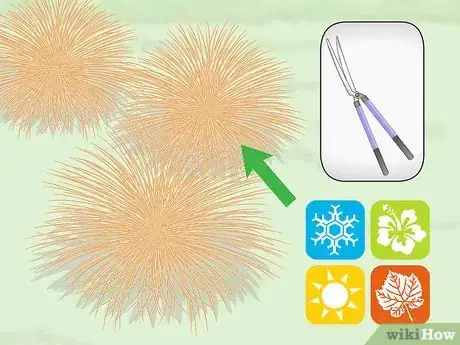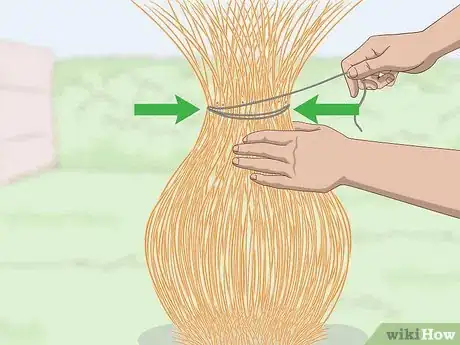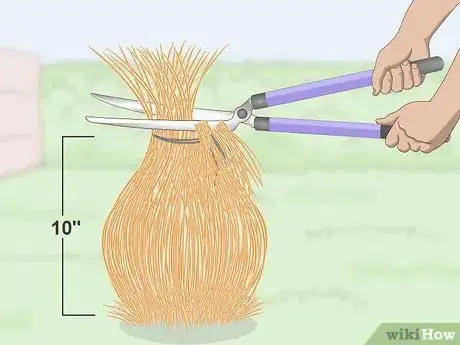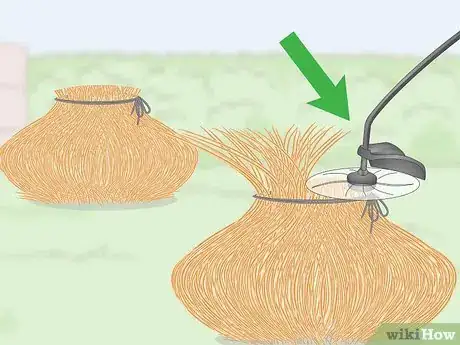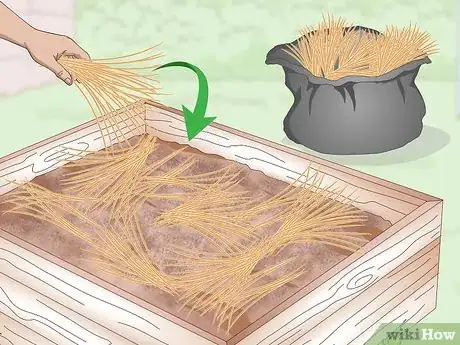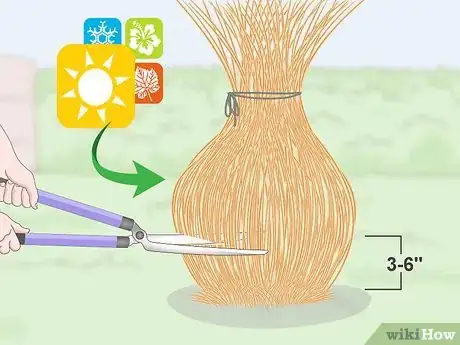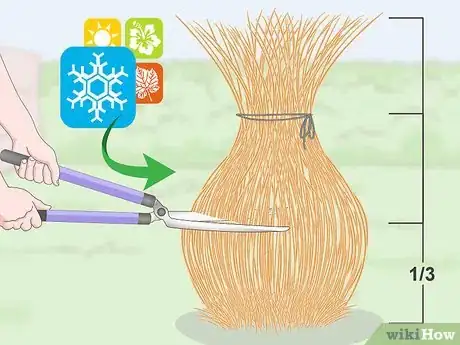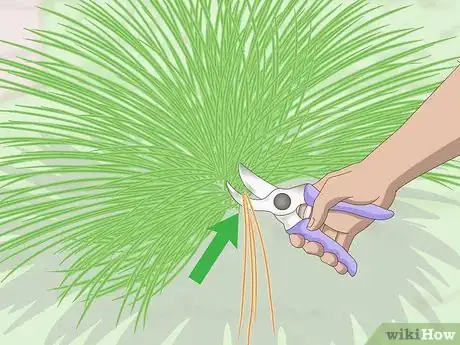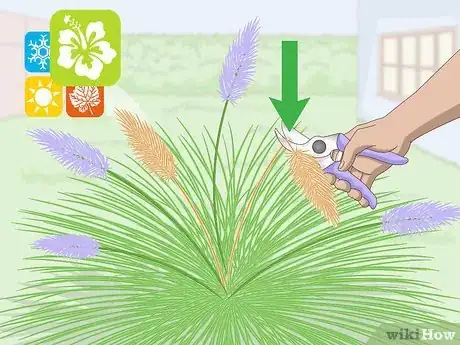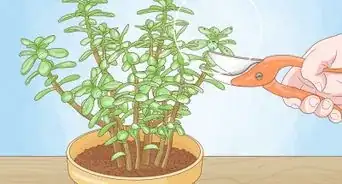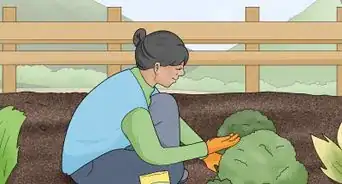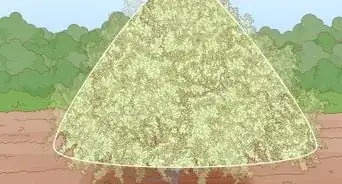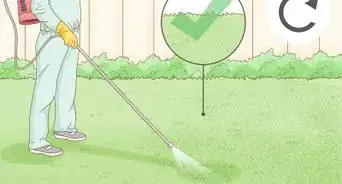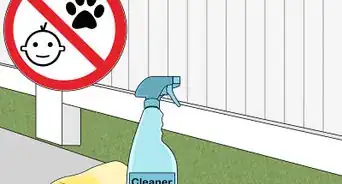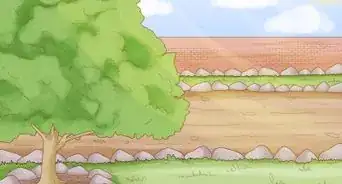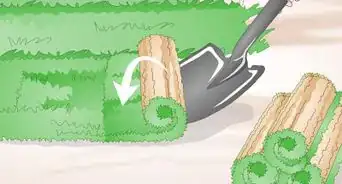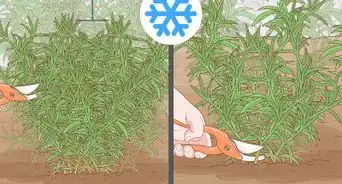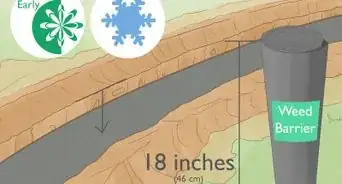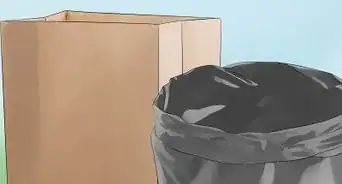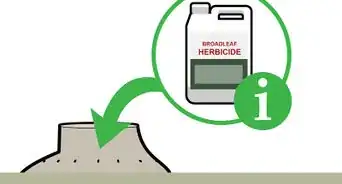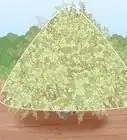This article was co-authored by Lauren Kurtz. Lauren Kurtz is a Naturalist and Horticultural Specialist. Lauren has worked for Aurora, Colorado managing the Water-Wise Garden at Aurora Municipal Center for the Water Conservation Department. She earned a BA in Environmental and Sustainability Studies from Western Michigan University in 2014.
There are 7 references cited in this article, which can be found at the bottom of the page.
This article has been viewed 25,560 times.
Ornamental grasses can be a beautiful and low-maintenance addition to a yard or garden. Pruning most ornamental grasses consists of an annual trim. Deciduous grasses (grasses that go dormant) need to have most of their length trimmed during their dormant phase or before their new growth starts. Evergreen grasses (grasses that are green all year), usually only need a little bit of their length trimmed. After that, a little hand-pruning is more than enough to keep your grass looking good.
Steps
Trimming Dormant Long Grasses
-
1Wait until late in the season to cut brown or spent grass. You want to cut back your grass once a year, as late in the season as possible. For warm season grasses, you want to trim them between late fall and mid-spring. For cool season grasses, cut them back in early spring. Cutting your grass in the wrong season can impact its ability to grow and pollinate.[1]
- Your grass should be brown before you start cutting it back. Ideally, you should wait until at least mid-winter or early spring to cut it back.
- Some insect species will spend the winter in bunch grasses. Wait until the spring to cut the previous season’s growth to protect wildlife.
- Examples of warm-season grasses include Japanese forest grass, Japanese silver grass, switchgrass, fountain grass, maiden grass, and prairie cordgrass.[2]
- Examples of cool-season grasses include fescues, blue oat grass, tufted hair grass, and autumn moor grass.[3]
-
2Gather your grass and tie it in a bundle. Long grasses are easiest to trim after you gather them into bundles. Use a piece of rope, bungee cords, or gardening twine to gather each grass plant into a column, and cinch the grass about a third to halfway up the length of the stocks.[4]
- You should tie the grass tight enough that you will be able to cut through multiple stocks at the same time, but not so much that you break the grass.
- If your grass is as tall or taller than you, you may want to tie a second length of rope up toward the top of the stocks so that trimmings don’t fall down on you and obscure your vision during the cutting process.
Advertisement -
3Cut the grass to about 10 inches (25 cm) tall using hedging shears. You can use either handheld or powered shears for this process. Once that is cleared out, you can go in to make final cuts and clean up. Try to keep the grass lengths as uniform as possible.[5]
- If you are using powered shears, remember to wear thick pants, gardening gloves, and durable closed-toed shoes to help protect against accidents.
-
4Use a weed eater with a blade to trim thick grasses. If your ornamental grasses are thick enough that shears won’t do the job, a weed eater or bush cutter may be a good alternative. Look for a model with a blade, and use this to trim your grass one bundle at a time.[6]
- You can buy weed eaters and bush cutters at most home improvement and gardening stores. You may also be able to rent one if you do not want to purchase one yourself.
- Never operate your weed or hedge trimmer above chest-level, as that makes it easier for you to lose control of the blade.
-
5Compost or throw away your grass clippings. Even when they’ve been tied up, tall grasses can make a big mess. Compost your grass bundles or dispose of them in a green waste bin. You may be able to rake up some of the smaller clippings, or you can put a layer of mulch down around the trimmed plant to cover small clippings while improving the soil quality.[7]
Cutting Back Dormant Short Grasses
-
1Cut warm-season grasses down to 3 to 6 inches (7.6 to 15.2 cm) tall. Using hedging shears, cut any part of your grass that is under 3 feet (91 cm) at the time of pruning down to a height of about 3 inches (7.6 cm). Areas of your plant that are over 3 feet (91 cm) tall should be cut closer to the 6 inches (15 cm) mark.[8]
- If it’s easier for you, you can make two straight cuts, one at each height. If you want your plant to maintain a more a natural look, you can always slowly taper the grass heights to transition between the highest and lowest points.[9]
- You can use handheld or powered hedging shears for this process.
-
2Cut cool-season grasses down to about a third of their height. Cool season grasses don’t need to be cut down quite as far as warm season grasses. Instead, they should be trimmed down to their lowest point of new growth, about ⅔ of the way down the plant. For a 3 feet (91 cm) tall grass, this means you should cut it back to about 1 foot (30 cm).[10]
- Just like with warm-season grasses, you can use either handheld or powered hedging shears for this process.
-
3Hand-prune individual blades between cuttings. Even though you typically only cut back ornamental grass once a year, you can hand-prune dead or unsightly blades of grass any time. Keep an eye out for brown or wilted stocks or patches, and remove those as they arise. All you need to do is cut off each wilted blade at its base using gardening shears.[11]
Maintaining Evergreen Grasses
-
1Comb through the grass to remove dead foliage. Every few months, it’s a good idea to put on a pair of gloves and gently run your hands through the grass. It should feel kind of like you’re finger-combing your hair. This helps pull out any dead foliage and keep your evergreens looking their greenest.[12]
- Work gloves are ideal for this process, but if you don’t have a pair of those you can always use rubber gloves.
-
2Clip out stubborn dead blades. Combing through the grass usually removes most of the dead foliage. If some brown blades remain after combing, though, you can always trim them out with gardening shears. Just remember to trim at the base of the blade to remove as much of the dead foliage as possible.[13]
-
3Cut off brown or spent flowering tips in the spring. Like deciduous grasses, evergreens generally need an annual trim. Unlike deciduous grasses, though, you don’t need to prune that much off evergreens. Use your gardening shears or hedge trimmers to cut any brown or spent flowering tips off the grass. Cut your grass back to new growth, which should still be green.[14]
- The exact length that you need to cut depends on what type of grass you have and how much your grass has grown out. That’s why you typically go by color instead of length for evergreen grasses.
Things You’ll Need
- Gardening twine
- Gardening shears
- Hedge trimmers
- Weedeater with a blade attachment
- Gardening gloves
References
- ↑ https://www.provenwinners.com/learn/did-you-say-use-chainsaw
- ↑ https://extension.illinois.edu/grasses/understanding.cfm
- ↑ https://extension.illinois.edu/grasses/understanding.cfm
- ↑ http://northcoastgardening.com/2014/01/how-to-prune-ornamental-grass/
- ↑ https://gardenerspath.com/how-to/pruning/pruning-ornamental-grasses/
- ↑ https://www.provenwinners.com/learn/did-you-say-use-chainsaw
- ↑ http://northcoastgardening.com/2014/01/how-to-prune-ornamental-grass/
- ↑ https://gardenerspath.com/how-to/pruning/pruning-ornamental-grasses/
- ↑ https://growbeautifully.monrovia.com/pruning-ornamental-grasses/
- ↑ https://gardenerspath.com/how-to/pruning/pruning-ornamental-grasses/
- ↑ http://gardeningsolutions.ifas.ufl.edu/plants/ornamentals/ornamental-grasses.html
- ↑ http://northcoastgardening.com/2014/01/how-to-prune-ornamental-grass/
- ↑ https://gardenerspath.com/how-to/pruning/pruning-ornamental-grasses/
- ↑ https://www.rhs.org.uk/advice/profile?pid=434
- ↑ http://northcoastgardening.com/2014/01/how-to-prune-ornamental-grass/
